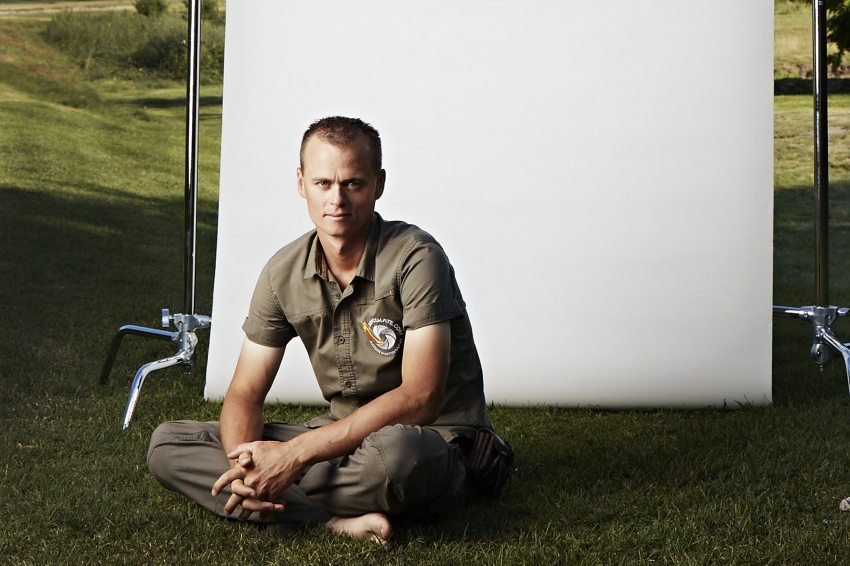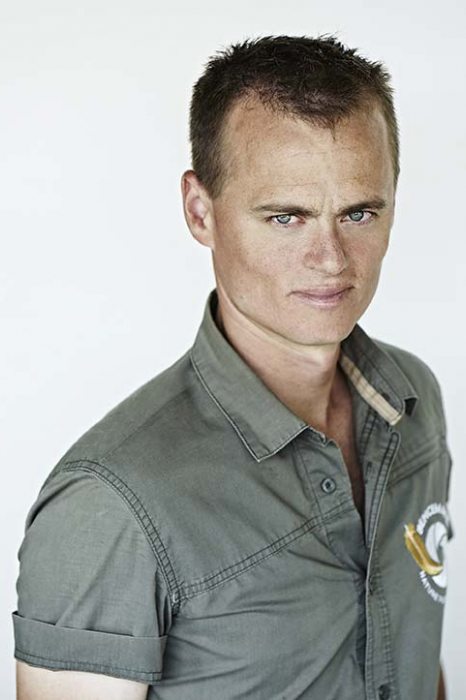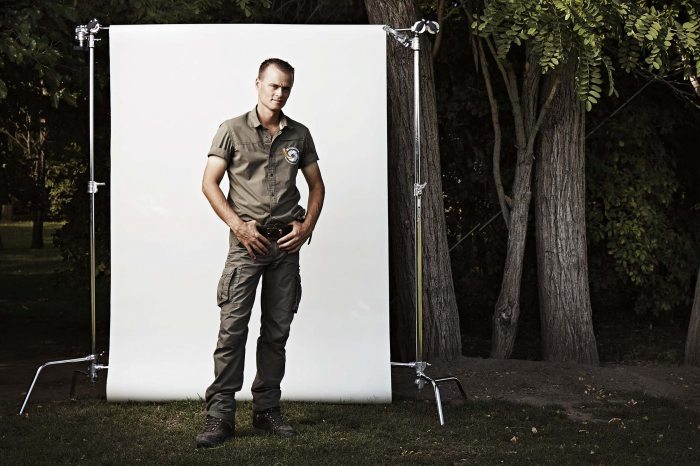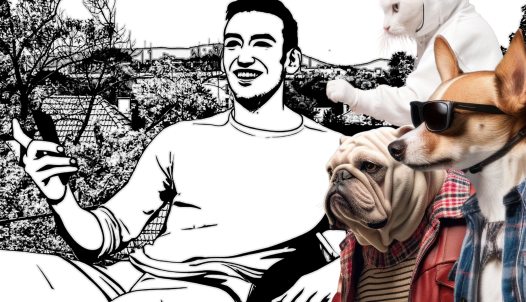Take care of the bird if it flies into your garden – an interview with Bence Máté
A couple of days ago in a Facebook group, undergraduate students tried to convince a 17-year-old not to go for social sciences, for „there is no money in that”. However, I met someone for whom financial factors played no role at all when choosing a carrier, but rather designed and built a bird hide next to a birdbath and started taking photos of the birds from there. “You invite me, I’ll invite you’ – says his webpage, and that is how he got as far as Sri Lanka for instance. He did not care that what he was doing is not something that many people would call “work”.
He is Bence Máté, who – based on his international awards – is the most successful wildlife photographer of present times.

- A couple of minutes ago I talked to your father and he said you had been “moderately” interested in schoolwork and put photography first. Were you strolling about in the village?
– Yes. I observed animals, explored their habitats – in a village, I had great freedom to do so. But, as I see it now, if I had grown up somewhere else, I would have found a hobby there that could have become my job in the end. We had a camera at home – it was unusual back then -, but my parents never took wildlife photos.
My first intention was to take home things to remember: bones, feathers, cones. That’s how photography started for me: I wanted to share with others what I experienced in nature.
It all started as a hobby. Then I won prizes in several competitions and saw that people liked what I was doing and that inspired me. I started in 1999, I had been taking photos with an analogue camera for five years, and I was already a fanatic when digital came along. Analogue cameras taught me a lot, thinking forward for example, or planning. These became natural to me, and this still is how I work today.
– Did you have a mentor or an instructor?
– Not really. I’m self-educated mainly, learned from my own experiences and I watched my friends. I was 15 when I got admitted into the Association of Hungarian Nature Photographers, where I met a lot of people who had the same ideas, way of thinking, as me, but the average age was about 50. I made connections that shaped my attitude, but I found that everyone had a job besides photography. But by then I’d decided that I wanted photography to be my profession, the only thing was, I didn’t know how.
I knew that in photography I found everything that made me happy: time spent outdoors and friendships. I thought, I’d just jump into this pool and find a way to swim ashore. There was no version ’B’. I decided at the age of 17 that this was to be my lifestyle.
– So it was only because of your parents’ expectations that you applied for a college that you haven’t even started?
– Yes. And because of the student card I got. It was really difficult, for my parents saw that I was not a loser, but it was not obvious how you could make a living from taking photos.
– How do you decide what the next photo project will be?
– I just observe nature and figure it out. There are times when you have to reconstruct a scene that you’d observed earlier, other times you just have to go there and catch the moment. There is this picture, for example, with an African Buffalo with the sunrise in the back. We were on a safari. I knew that there is this precious time slot when the Sun leaves the horizon. Here you only have a few minutes to find a scene. I planned everything in advance: the angle for taking the shot, the distance, everything that can be planned, but in the end the Oxpecker flying off the African Buffalo was a coincidence.
However, that picture with the ground squirrel eating a dandelion’s crop is a scene I reconstructed. I had seen earlier the ground squirrel beating the crops off the dandelion, and the wind blowing them away, so I started preparing for it. Next year I waited till the dandelions began blooming, and I mowed the lawn at the right moment. When I had already been working on the theme for a week I figured, I won’t be able to take a shot with the wind being so unpredictable. So I put up a tent above the dandelions, thus the wind didn’t bother me anymore. The ground squirrel was not disturbed by the tent. Then I put two ventilating fans on both sides of the flower. When I saw which side the ground squirrel was coming from I switched on the appropriate fan. So it took me three weeks of hard work like that to take a photo of something that is difficult just to observe.
I give several stimuli to wildlife, but if animals do not react to it, I’ll just leave it, I don’t force anything. It happens sometimes that I start observing something, but something much more interesting comes up, so I change the project.
– Could you talk a bit about the farm you live on?
– It’s about 7 km from Pusztaszer, and it’s my adult life playground. I was interested in this project: creating something that serves wildlife from bare agricultural land. We replaced sunflowers with indigenous grasses. Thus the area started to transform into its original natural state, amphibians and reptiles appeared, then their predators, birds, and mammals. In just a couple of years, the whole ecosystem’s transformed in front of my eyes – now that was wonderful! When I see a species I try to check on what kind of habitat it needs, for example, I needed a tree with a hole that is suitable for nesting – once I had that, birds didn’t come immediately, but after two-three years rollers started to nest there, and then hoopoes and sand-martins came, and now we even have an eagle-owl. Now I’ve just placed out bat boxes because there are a lot of bats here, but they do not have a suitable habitat. We resettled ground squirrels there with the help of the National Park. It is a very rare, strictly protected species, but the expert said that presumably, this area would be suitable for them. From 156 specimens we have reached 3000 by now, and this is the greatest ground squirrel population in the Dél-Alföld region. We feed them, they live close to humans, where there are fewer predators – of course, this is contributing to the success, too.
Wildlife can be helped, not just destroyed, and that is very exciting!
I don't have any pets, because I can't take responsibility for them if I go away for several months.
– How do you organize your journeys?
– At the beginning with my crew we visited hotels that offered us free accommodation and food and in return, we built hides on their lands. Obviously, it was a bit strange, a young man writing a letter like that from 8000 km, but there was a hotel in Costa Rica and one in Brazil that took us on. We built the hides ourselves with our hands, working with wood, metal, and concrete, although it happened once that when the timber arrived we realized that there was no matching pair among them, they were all of different sizes, and we had to build a hide from that. At those places, I always figured out how to create something original from a unique perspective – that was a challenge. Now they got to know me, thanks to several competitions and the media, so hotels are more willing to support such an initiative. You have to check on the country, of course, because we are full of stereotypes. For instance, I knew that there are poisonous snakes in Costa Rica, but then I saw in the statistics that only 6 people died of snakebite the previous year. I thought I was in greater danger here just crossing the street. And when I arrived I saw that kids were running barefoot up and down in the grass.
It’s interesting, however, that most people think that you have to travel to exotic places, like South Africa, to find a good topic for photography. Now, there are plenty of creatures here, in Hungary that are worth a shot. I think we must explore our own surroundings first.
– „You invite me, I’ll invite you!” – this call is still on your webpage. To what countries have you visited thanks to this appeal?
– I’ve been to Sri Lanka and Finland. And Tanzania, but that wasn’t a success. A guy came to us, we took him everywhere for two weeks, he was able to take good photos, but when our turn came, and we visited him, he took all our money, left us on the side of a road and left. We rebooked our flights and came home the next day. After this incident, I thought: I always assume the best of everyone, that’s just what I’m like. I remembered Csaba Böjte (a Franciscan monk and priest working with and helping orphan children) saying: “ you can love out the good from everyone”. Well, how would it have been possible to love out the good from this guy? I don’t know. But what I do know is that I’ve been to 56 countries so far, have met and worked with all kinds of people, but this was my only negative experience. So I’d say it’s worth seeing the good in people.









